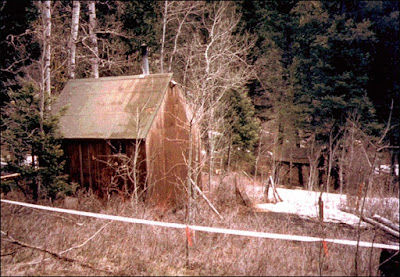The FBI released the below piece:
No two people write alike.
It was
something Terry Turchie, the lead FBI agent on the UNABOM Task Force,
remembered a creative writing teacher saying to him in school. Although that
advice came many years before Turchie was investigating a serial bomber, it
would prove crucial to solving the case.
The
Unabomber began his campaign of violence with a package bomb he left in a
parking lot of the University of Illinois’ Chicago Circle Campus in 1978. He
would go on to place a bomb on an aircraft and leave others in university
buildings and by computer stores. He would also mail powerful bombs to a number
of university professors and to businesses and executives. He unleashed 16
bombs that killed three people and injured nearly two dozen before he was
arrested on April 3, 1996.
Despite
being active for nearly 20 years, the Unabomber was meticulous about leaving no
evidence that could be traced to him and took pains to avoid being seen.
“He
was the most careful serial bomber anyone had ever seen,” said Special Agent
Kathleen Puckett, who worked on the UNABOM task force and led efforts to
profile the bomber. (Both Puckett and Turchie are now retired from the FBI.)
But
when the bomber began communicating, first in letters to some of his victims
and then with the media, Turchie said he was also inadvertently communicating
with the FBI. Investigators were analyzing his every word.
“We
didn’t have any line to him except the letters he started sending in 1993,”
said Puckett. “It was a bonanza of information.” The letters pointed
investigators to ideas he held, topics he studied, and books that were
meaningful to him. To Puckett, who was working toward her Ph.D. in clinical
psychology, they revealed things about his education, age, and personality.
After
lethal bombings in 1994 and 1995, the Unabomber wrote to several publications
asking them to publish an essay that he believed would memorialize his
achievements and his ideology. Although the bomber promised to cease his bombs
if his writings were published, FBI leaders pushed for publication with a different
goal in mind: using the Unabomber’s own words to identify him.
“Somebody
would recognize this,” Turchie said of the decision. “The writings were very
passionate—that there’s no question this man really believes in what he’s
writing here. So he probably held these beliefs his entire life.”
Puckett pointed to very
particular spellings and phrases—such as the British spelling of the word
“analyse”—as unique identifiers in the text that she hoped would catch
someone’s eye.
Sure
enough, a few months after the manifesto was published, a lawyer representing
David Kaczynski called the FBI. He provided them with a 23-page essay his
client’s brother, Theodore Kaczynski, wrote in 1971. The agent who first read
it immediately spotted similarities.
Turchie
said that when he got a copy of the essay, the phrase “sphere of human freedom”
jumped out at him. He said he went back to the Unabomber’s manifesto and found
this line:
“We are going to argue that industrial-technological
society cannot be reformed in such a way as to prevent it from progressively
narrowing the sphere of human freedom.”
The
similarities in the texts along with other evidence that came to light as
agents investigated more of Kaczynski’s past and records made Turchie more and
more certain that they had their man. “The little things started adding up,” he
said. “Several of us believed we had identified the Unabomber.”
That was enough to get a search warrant for the rustic cabin in Montana where Kaczynski lived. Among the evidence found in the cabin were thousands of pages of Kaczynski’s handwritten notes, including confessions to all 16 bombings. His words helped agents find him, and they helped prosecutors build the case against him.



No comments:
Post a Comment